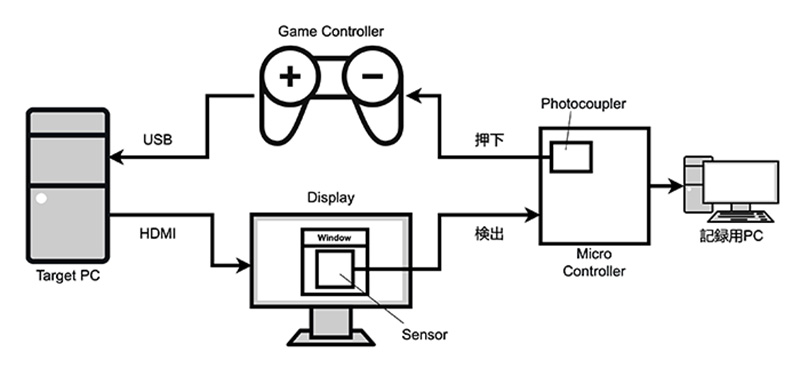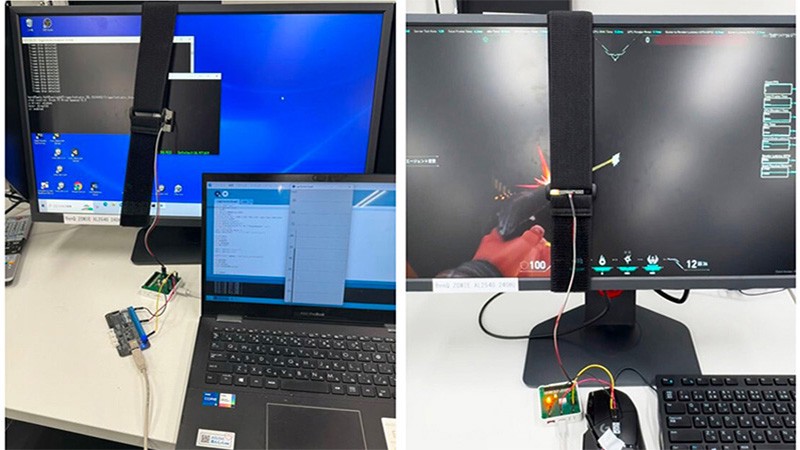In computer input/output environments, delays occur at each stage of the process from input to output. It is known that environments with less delay achieve higher input accuracy and more comfortable operation, requiring delay reduction efforts in hardware, OS, and user applications respectively. In the HCI field, the delay problem is also gaining attention, with discussions on the effects of input device delays and display output delays.
However, the impact of delays in experimental systems used in HCI research and perceptual psychology/cognitive science research has not been well considered, despite the problem being pointed out. While some experiments examine differences in reaction speed at the 10-millisecond level, experimental systems can easily experience random variations of about 40 milliseconds, necessitating careful attention in experimental system design. Therefore, in this research, we created a delay measurement device using photocouplers and phototransistors for commercial game controllers and LCD displays, and conducted delay measurements under various conditions.
Measurement System and Results

The figure above shows an overview of the developed measurement system. It generates controller button inputs using photocouplers, lights up part of the display accordingly, and measures the delay from input to output by detecting with phototransistors.
The measurement results revealed that controller response performance can differ by about 30 milliseconds depending on the product, and that using high frame rate LCD displays can reduce delays to a maximum of about 20 milliseconds. However, it was also found that delay variation ranges can be about 40 milliseconds. Additionally, we discovered that frame-level delays can occur depending on how software is implemented, and that delays change depending on whether experimental application screens are displayed in windowed or fullscreen mode, providing important insights to consider in experimental system design.

